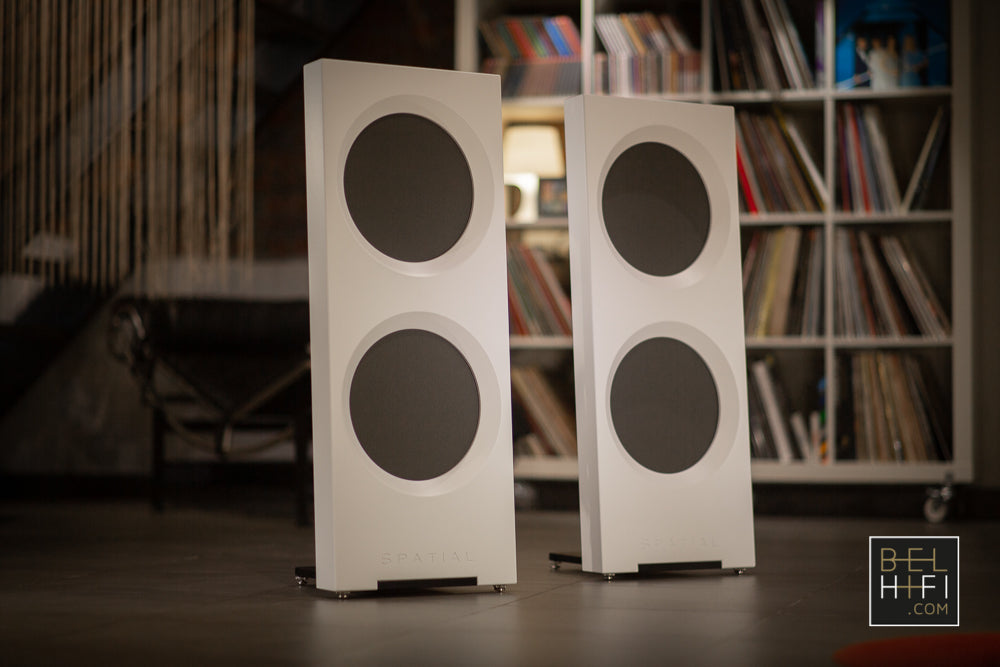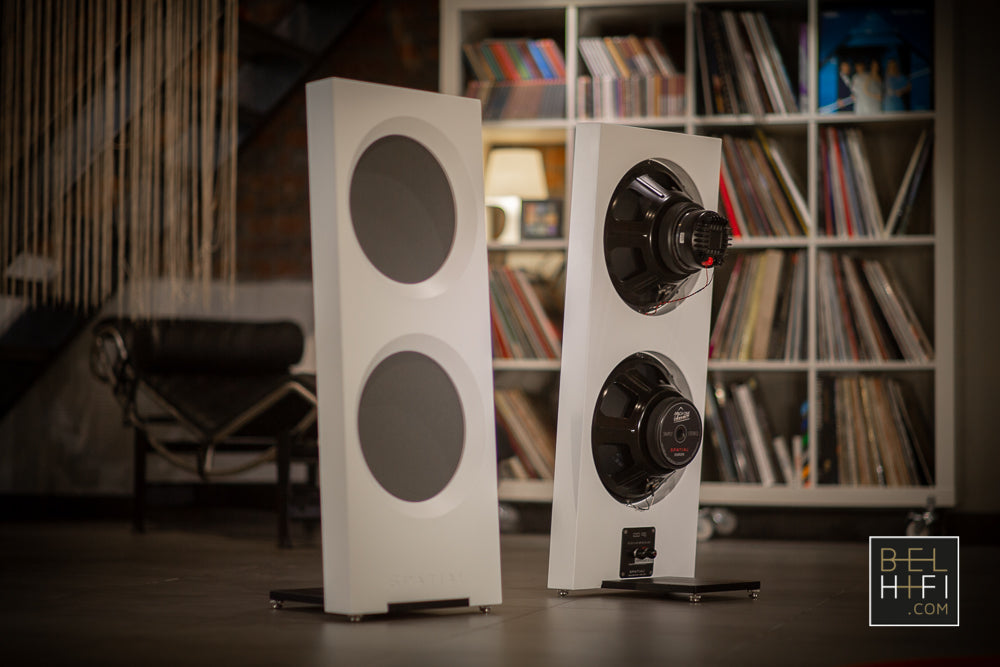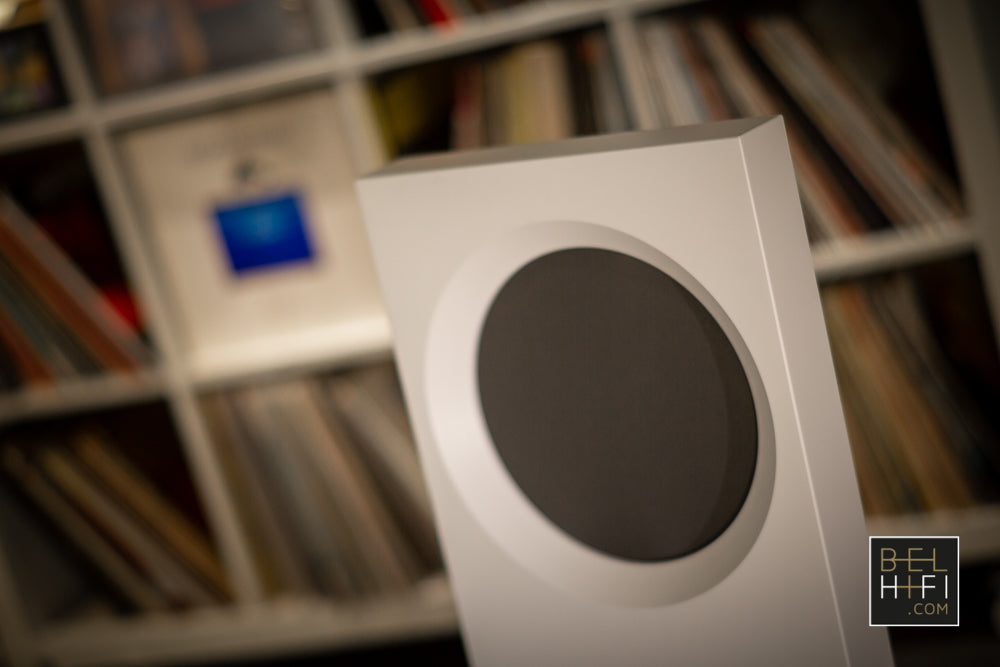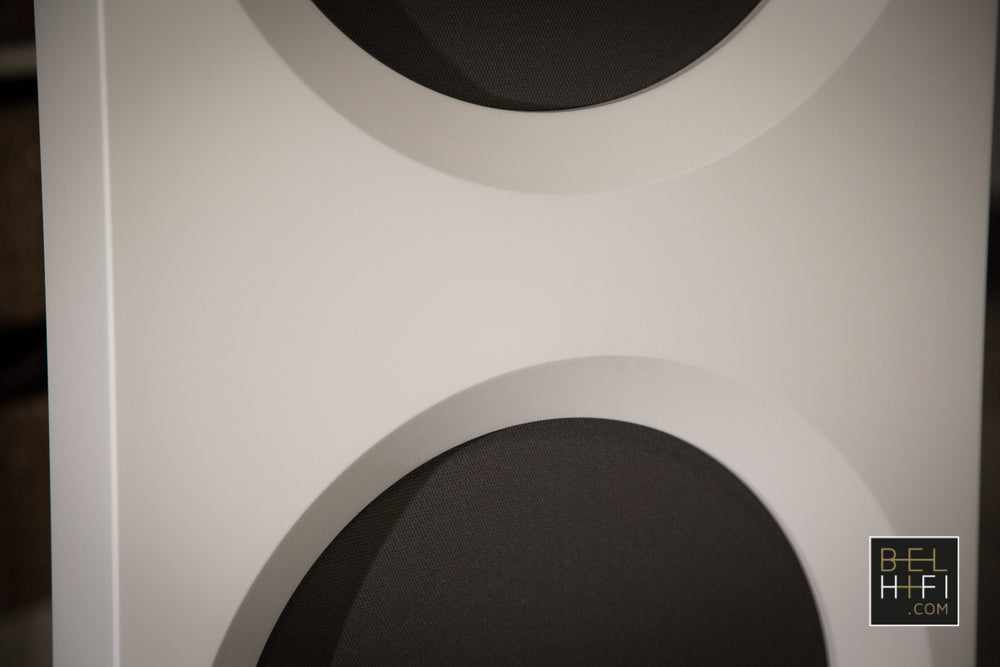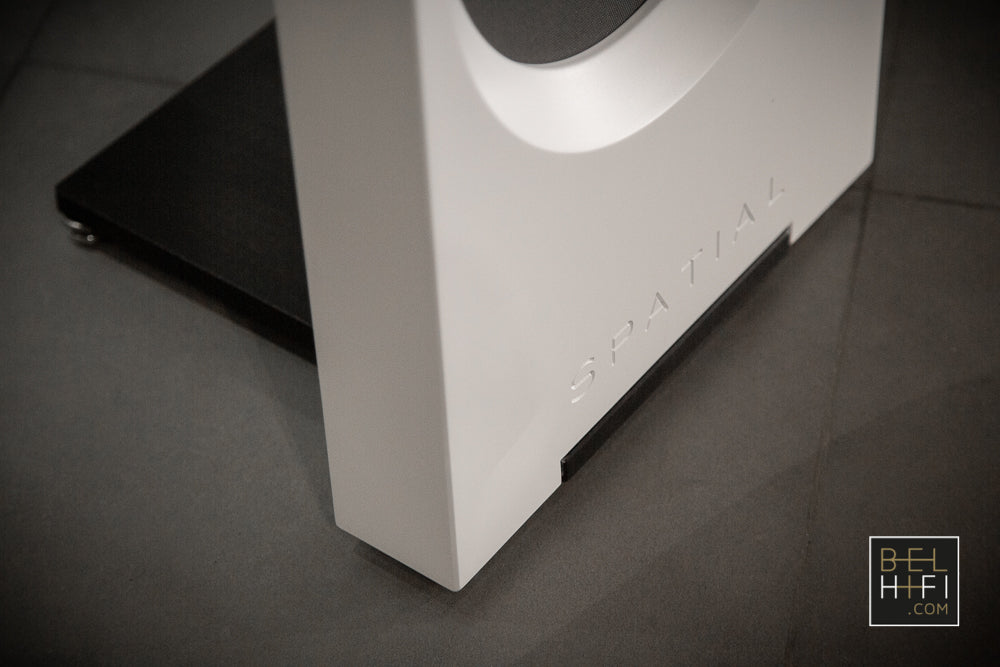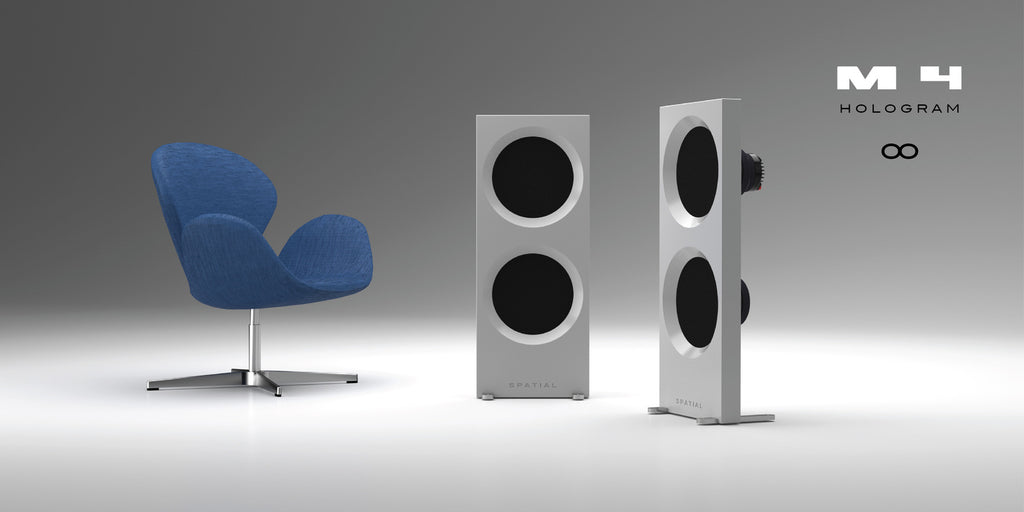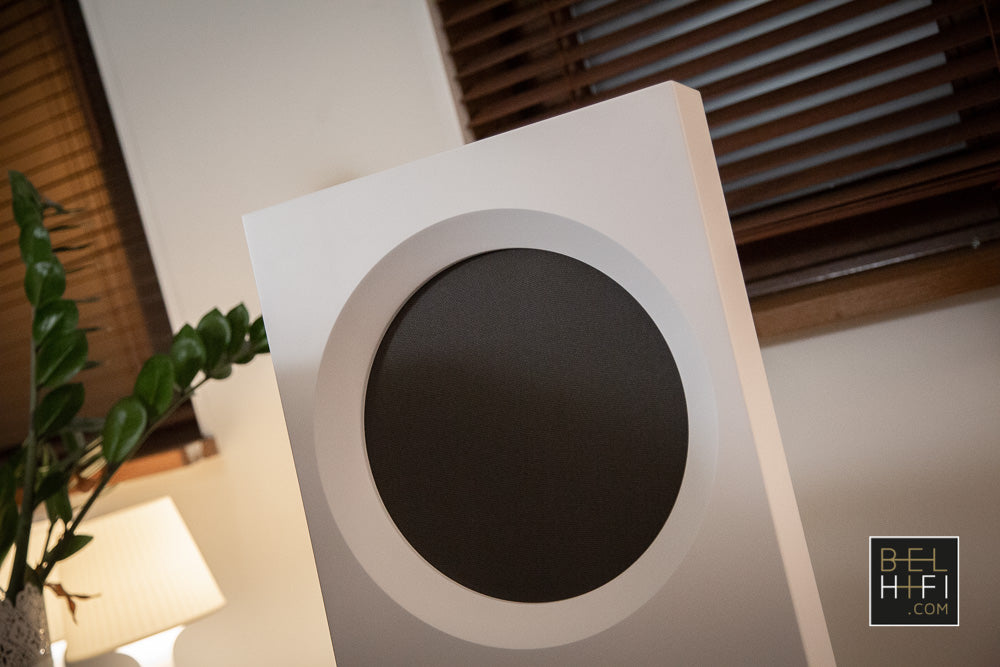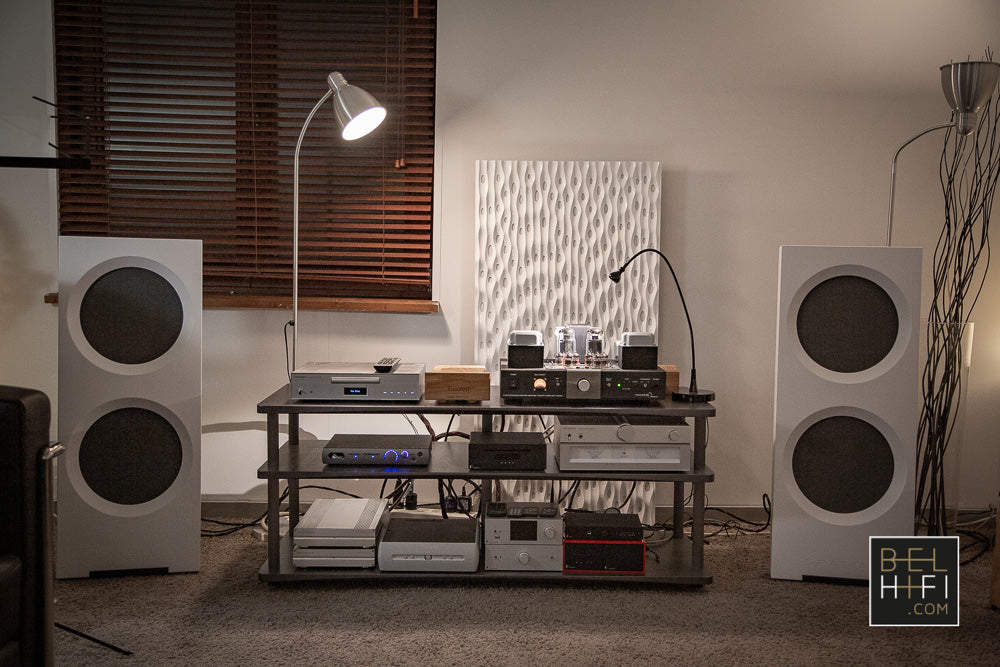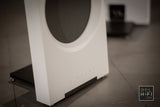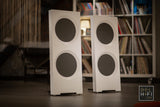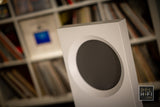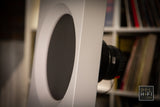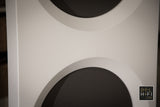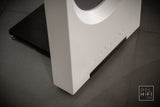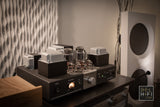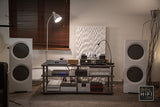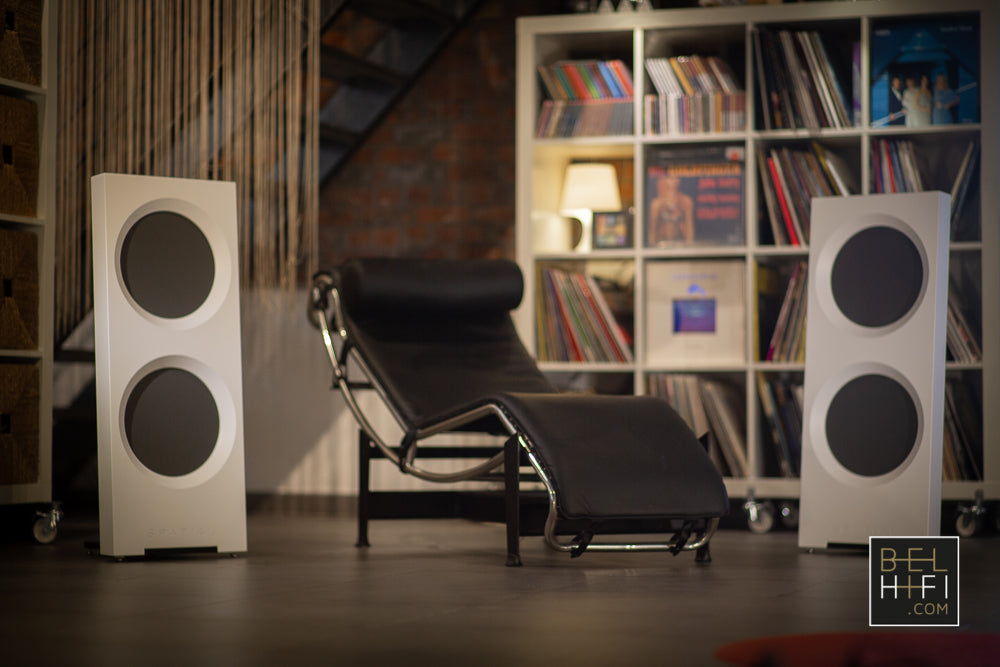
Details
Spatial MC Series N°2:
Ex Demo!
Perfect shape!
On demo at the shop!
Transform your life through music
The Hologram M4 distills the breakthrough technology of the M3 into an even smaller size and lower price with only slightly less deep bass extension.
The M4s holographic imaging and powerful dynamics easily outperform traditional speakers in its class.
High efficiency and ballistic dynamics are combined with precision response and beautiful tonal color to create the best speaker.
All in a timeless architectural design. Join us in the future of loudspeaker design.
Design by Clayton Shaw • Engineered and manufactured in the USA..
The Hologram M4 distills the breakthrough technology of the M3 into an even smaller size and lower price with only slightly less deep bass extension.
The M4s holographic imaging and powerful dynamics easily outperform traditional speakers in its class.
High efficiency and ballistic dynamics are combined with precision response and beautiful tonal color to create the best speaker.
All in a timeless architectural design. Join us in the future of loudspeaker design.
Design by Clayton Shaw • Engineered and manufactured in the USA..
Hologram design:
Spatial's new Hologram series of loudspeakers incorporate a number of advanced design features that work together to achieve a more realistic reproduction of music than ever before.
• Open Baffle Design - Eliminating the speaker box dramatically improves the sound of a speaker by eliminating all manner of box related resonances and re-radiation of sound from inside the box.
A free-flowing ease and dimensionality is immediately recognizable as more like actual music and less hifi sounding.
Bass is extremely detailed and realistic sounding, while the midrange is portrayed naturally, with an open, 3D presentation.
The challenge of creating an open-baffle speaker with powerful bass is especially daunting, The Hologram series succeed in producing unprecedented bass performance in a compact form factor.
• Point Source Design - A properly designed point source driver provides a coherent transition from midrange to treble and stable imaging by eliminating comb-filtering.
the interference patterns found when the tweeter is physically separate as in most speaker designs. Hologram models exhibit phenomenal imaging and soundstaging.
• Controlled Directivity Design* - Dispersion angle is limited to around 80 degrees and held constant across the spectrum, allowing less interaction with the room and much more even response in reflected field energy.
• Ultra wideband compression driver - The suspension design of our compression driver allows a very low crossover point at 800 Hz, providing coherent, high definition reproduction through the midrange and treble region.
Since most of the midrange is produced by the low mass compression driver instead of the cone driver, a dramatic improvement in resolution and reduced distortion is provided compared to conventional speaker designs.
• High-efficiency Drivers - The use of very high efficiency drivers provides outstanding dynamic response without compression effects.
The mid/tweeter's 108dB sensitivity essentially eliminates any compression distortion when used in domestic applications.
• Linear Response - Uniform frequency response is critical to accurate music reproduction. Great care has been taken in voicing the speaker in the effort to reproduce natural pitch and tonal balance.
Controlled Directivity Explained:
The idea with controlled directivity is to create a situation in the room where the frequency response shape (and therefore tonal balance) of the direct field is similar to the reflected field.
In domestic listening environments, the walls and floor/ceiling boundaries are close to the speaker, so the manner in which the speaker interacts with the boundaries plays a determining role in the final sound quality in a given listening room.
Concurrently, the reduced levels of reflected energy lowers the amplitude of room sound, increasing the ratio of direct to reflected field energy at the listening position.
Conventional box speakers with surface mounted mid and treble drivers typically have very uneven frequency response off-axis.
Unfortunately, this uneven response pattern is being reflected off the boundaries, which is then mixed with the on-axis, direct radiation coming from the speaker.
The summed response at the listener position is one of degraded quality compared to the direct field alone.
Additionally, the reflected field energy is arriving later due to the extra distance traveled, causing a number of time domain related problems such as blurred imaging and poorly constructed soundstage projection.
The sound also takes on the character of the room more than is desired, creating inconsistancy from one installation to the next.
Loudspeaker manufacturers using the conventional approach really have no idea what their customers are hearing due to room interaction being such a large factor.
The best known way to address this problem is to employ controlled directivity principles, which are well known and highly developed in professional audio, such as in studio monitors and live sound applications.
As applied to the home listening environment, this means that the dispersion angle is narrower and more consistent with frequency, with less energy hitting the side walls and floor/ceiling boundaries.
We aim to produce an 80 degree pattern that drops off quickly beyond that point and has a frequency response shape close to the on-axis response.
We can’t eliminate energy bouncing off boundaries, but we can reduce the level, which increases the ratio of direct to reflected field energy.
Then, the summed response at the listener position is similar to the quality one would expect in a near-field listening arrangement. This, in effect allows the listener to hear the speaker itself, instead of such a strong mix of the speaker and room.
We achieve broadband uniformity of directivity by controlling the radiation angle specific to the differing properties of bass, mid and treble.
Open-baffle bass provides directionality in the bass region where the wavelengths are very long, the large mid cone controls the angle in the midrange by virtue of its size compared the wavelengths of the mids.
The same cone provides a waveguide function to the point source compression tweeter.
The Hologram achieves these objectives in a surprisingly simple and compact package.
Specifications:
Type: Precision Point Source 2-way coaxial design, open-baffle, dynamic driver, controlled directivity, low noise design
Chassis: Super HDF - 2.5 inch thick - low vibration monocoque structure
Driver compliment: Two 12 inch mid/woofers, one wide bandwidth compression driver
Crossover: 800Hz - Passive - Hologram Passive Network Technology - WBT NextGen Binding Posts, Duelund treble cabling
Frequency Response: 45Hz - 20kHz +/- 3dB in-room response
Sensitivity: 93dB - averaged across 200Hz to 5kHz at 1M - on axis
Impedance: 4Ω nominal, 3 Ω minimum
Amp Requirements: Tube or Solid State 10 W or larger
Dimensions: 36T x 14W x 3D inches, 44 lbs.
20 year limited warrantySpatial
MC Series N°2 (PAIR)
€2,500.00 EUR €4,250.00 EUR




